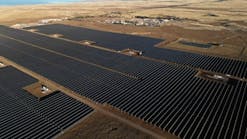“What is a Microgrid?” has been the top viewed article on www.microgridknowledge.com for several years. Even speakers at the 2024 Microgrid Knowledge event in April were discussing the definition, noting that the Department of Energy now defines them as “a group of interconnected loads and distributed energy resources within clearly defined electrical boundaries that acts as a single controllable entity with respect to the grid. Microgrids can connect and disconnect from the grid to enable them to operate in both grid-connected or island mode.”
Microgrid Knowledge is in our family of energy media brands now; you may have seen some past articles from its Managing Editor Rod Walton that we have shared. The article I mention, written by co-founder Elisa Wood, does a great job of simplifying the definition, saying that a microgrid is defined by three characteristics: it’s local, independent, and intelligent. It’s not just a group of solar panels on a building.
I attended the Microgrid Knowledge event this April and learned very quickly that not only is it a deeper topic than I realized, but it’s also a close-knit community that is quickly expanding as microgrids gain more interest and acceptance — and are becoming a part of the solution to some bigger puzzles.
Beyond the basic “what is” question, more questions arise for utilities and their relationships with them. What do microgrids mean for utilities? Are they the answers for climate change, security, and electrification? All the big issues for utilities?
Microgrid Knowledge is an event that hasn’t necessarily been all that well attended by utilities in the past because microgrids initially were mainly developed by non-utilities. According to an article by Lisa Cohn, universities were early adapters of microgrids. The U.S. military has been another early adopter. But truthfully, utilities have been involved with microgrids for years as well; and microgrids haven’t caused a utility death spiral.
ComEd built the Bronzeville community in 2018, which was a microgrid cluster designed to help utilities learn how to integrate microgrids with renewable energy and maximize efficiency with networked microgrids. T&D World covered it in its August 2019 cover story.
When you type in “microgrids” as a search term of T&D World’s website, 631 results come up. So, we have been writing about microgrids for a long time. But now, it seems, utilities are reaching across industries to figure out where else to go.
Laura Wright, VP of technical services at Baltimore Gas & Electric, an Exelon company, headlined the event along with representatives from the Department of Energy. She started out by saying “I am the macro grid,” in addressing a mix of businesses, analysts, institutions, and government reps. “We need to be able to work together; come to us with your ideas,” Wright said. She mentioned that utilities are responsible for providing reliability but when you consider grid resilience, there are no standards related to resiliency. Utilities can struggle to provide resiliency, and rate cases with investments for resilience have been known to be thrown out because of costs, despite federal incentives and grants.
So actually valuing (or quantifying) resilience, and in turn quantifying the value of microgrids, has yet to be done on a higher level. She sees microgrid development and operation as a way to provide resilience. “There are always going to be events that make the grid go down,” Wright said.
In fact, Superstorm Sandy proved to be a pivotal event in history for microgrids. When the Northeast lost power from the storm, Princeton University still had power because it was a microgrid operator.
Another hot topic was load growth, in particular from data centers. Utilities may turn to microgrids to help satisfy the electricity needs of powering the Internet, bitcoin, AI, and the HVAC to protect the sensitive equipment. A typical data center can range from 100 to 300 MW in electrical demand.
Whether owned by the utility or as a partnership with the end user, microgrids may be a way to alleviate the demand. This month T&D World covers microgrids from two different perspectives. On page 32, Snohomish PUD shares how it provided the design and engineering support for the Tulalip Tribes of Washington’s microgrid. PUD sees several benefits from the project including the potential creation of a larger resiliency zone with more microgrids, which could help more of the Tulalip community. It could also be a learning experience in helping PUD better understand how to integrate distributed energy resources onto its grid.
This month we include another unique story for T&D World: Senior Editor Jeff Postelwait looks at how national labs are working with utilities to develop new algorithms to study and demonstrate the usefulness and functionality of microgrids. It’s a neat look behind the scenes and makes me proud of how innovative our U.S. labs are. If I were smarter, I would want to work at one.
As we learn more about the potential of microgrids, it becomes clear they hold one of the keys to addressing some of the most pressing challenges facing utilities today. They won’t ever replace the macrogrid, but the future of energy definitely looks increasingly decentralized, intelligent and more interconnected.



